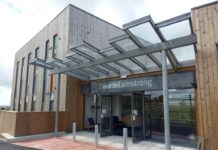A new purpose-built base for waste management company Clear-flow Ltd has been approved for more than £425k of Convergence investment.
The project, worth just under £867k, will provide 580 sq m of hybrid workspace built and create 15 new jobs as Clear-flow expands.
Clear-flow currently operates from two sites in Cornwall – Bissoe and Camborne – and a depot in Newton Abbot. The company has outgrown the Cornwall premises and plans to centralise the management and operation of the business to a dedicated site at United Downs, which will both improve environmental and operational efficiency.
As well as meeting Clear-flow’s immediate expansion needs, the investment will also provide capacity for future growth and make use of an existing brownfield site.
James Hustler, Clear-flow managing director, said: “We are incredibly excited about our new base. Over a number of years we have built up successful relationships with many corporate and personal customers and our new building will be a symbol of our professionalism and desire to see our growth continue and operational efficiency increase.”
The new build will include 288 sq m of offices on two floors with a 144 sq m workshop and equipment servicing area. The scheme will also provide a detached, 148 sq m multipurpose processing unit as well as parking and vehicle storage facilities for a fleet of 20 vehicles, which includes specialist tankers capable of dealing with leachates, industrial processing, manufacturing, sewage and other sludges.
Business Location Services Ltd has acted on the project as project manager, including the application for Convergence funding.
Robertson Partnership has been appointed as architects and CSA Architects as the BREEAM Assessor. BREEAM (Building Research Establishment Environmental Assessment Method) is a measure of environmental sustainability in industrial and office buildings.
Cathedral Builders is the main building contractor with completion estimated to be early November 2010. The building should be fully operational by the end of the year after being fitted out with specialist equipment.









